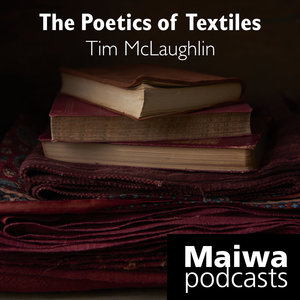On Thursday September 26th Anna Heywood-Jones delivered her lecture "Metamorphosis" to the Maiwa audience. Anna offered a manifesto to the plant kingdom and explored, in creative detail, how one could consider new ways to think about plant intelligence. She offered a poetic exploration of fathom as well as a poignant summary of a personal project exploring memory and identity which was made in collaboration with her father, who is suffering from Alzheimer's Disease.
Anna was introduced by Tim McLaughlin:
Good evening.
Sometimes one meets an artist and one wonders what type of person they might be in another life. What type of person they might have become if things had worked out differently and they never became an artist.
Looking over the works of Anna Heywood Jones, one gets the sense that she would follow a career in which she puts things in order; as a lexicographer puts words in order, as a cartographer puts places in order. One gets the sense that she is a grammarian of the natural world, quietly sampling, testing, sorting, considering, organizing.
For example, one of her works, titled “Tinctorial Cartographies” consists of twelve months of harvesting and mapping the natural dye plants of Nova Scotia. She is mapping in many varied senses of that word: Geographical, ecological, biological, social, emotional, chromatic.
In 2013 Anna graduated from the Emily Carr University, in 2016 she completed her Masters of Fine Arts at the Nova Scotia College of Art and Design. Before, after, and throughout her formal education she embarked on projects, exhibitions, residencies and lectures where she considered the natural world, how it is transformed and is transforming. She is a master of the trace.
The range of her exhibitions now covers most of North America from Nova Scotia to San Francisco. We are most fortunate to have her with us tonight
It gives me great pleasure to welcome Anna Heywood Jones.
http://www.annaheywood-jones.com/






























































